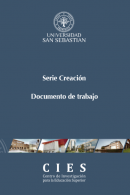
Computer-aided design of T-cell epitope-based vaccines: addressing population coverage
| PROCEDENCIA(S): | Ciencia y Medicina, Ingeniería y Tecnología, USS Concepción. |
|---|---|
| CATEGORÍA(S): | Biología Molecular, Biotecnología Médica, Ingeniería y Tecnología, Inmunología, Métodos de Investigación en Bioquímica, Patología. |
| AUTOR(ES): | P, Oyarzun / B, Kobe. |
| TIPO DE MATERIAL: | Artículos, Investigación. |
| ARCHIVO: |
 Reconocimiento CC BY. Esta obra está bajo una Licencia Creative Commons Reconocimiento CC BY 4.0 Internacional.
Reconocimiento CC BY. Esta obra está bajo una Licencia Creative Commons Reconocimiento CC BY 4.0 Internacional.
Epitope-based vaccines (EVs) make use of short antigen-derived peptides corresponding to immune epitopes, which are administered to trigger a protective humoral and/or cellular immune response. EVs potentially allow for precise control over the immune response activation by focusing on the most relevant – immunogenic and conserved – antigen regions. Experimental screening of large sets of peptides is time-consuming and costly; therefore, in silico methods that facilitate T-cell epitope mapping of protein antigens are paramount for EV development. The prediction of T-cell epitopes focuses on the peptide presentation process by proteins encoded by the major histocompatibility complex (MHC). Because different MHCs have different specificities andT-cell epitope repertoires, individuals are likely to respond to a different set of peptides from a given pathogen in genetically heterogeneous human populations. In addition, protective immune responses are only expected if T-cell epitopes are restricted by MHC proteins expressed at high frequencies in the target population. Therefore, without careful consideration of the specificity and prevalence of the MHC proteins, EVs could fail to adequately cover the target population. This article reviews state-of-the-art algorithms and computational tools to guide EV design through all the stages of the process: epitopeprediction, epitope selection and vaccine assembly, while optimizing vaccine immunogenicity and coping with genetic variation in humans and pathogens.


